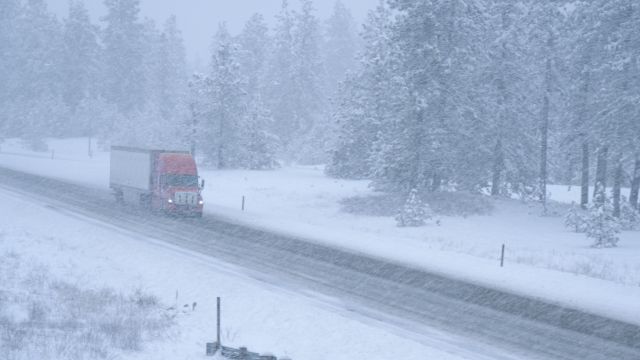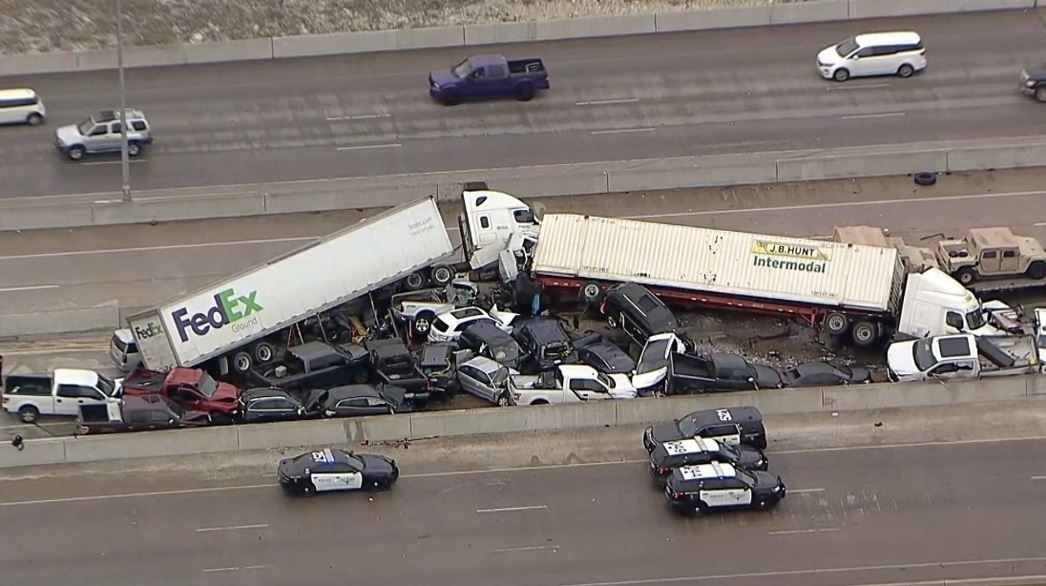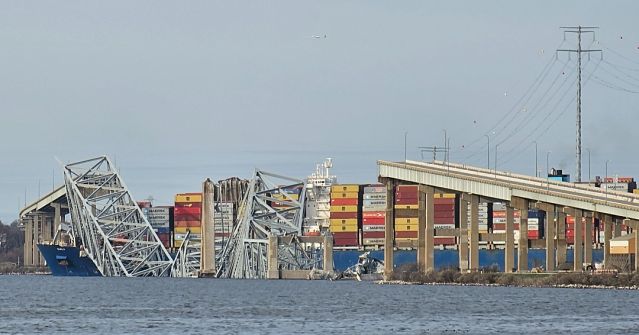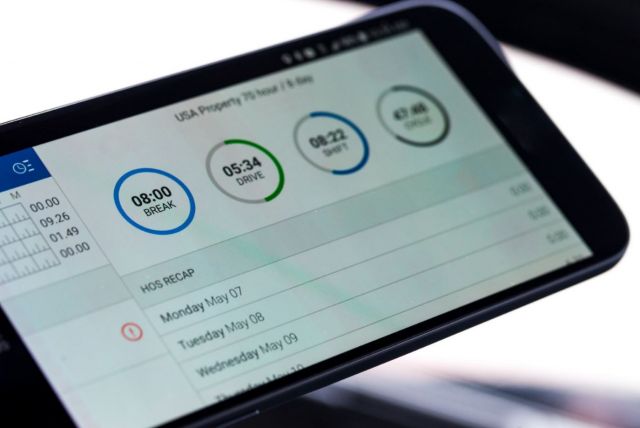Winter storms Shirley and Uri left their marks on Canada, the USA and Northern Mexico in February 2021. Most notably impacted were US states that are typically immune to subfreezing temperatures, snow and ice like Georgia, Tennessee, Louisiana, Arkansas, and, most critically impacted, Texas. When these record-breaking snowstorms hit the Lone Star State, a dire situation ensued that disrupted supply chains across the country.
Shirley & Uri
On February 10th, a Winter storm unofficially named “Shirley” delivered sleet and ice to parts of the East Coast, the Ohio Valley and states that rarely experience cold temperatures. The ice storm continued into February 11th leading to treacherous driving conditions and hundreds of car accidents. The most notable of these accidents was the 130-vehicle pileup on the I35 near downtown Fort Worth, TX that claimed 6 lives.
Just days later before the state could begin to recover from the first Wintery blast, a second storm dubbed “Uri” swept from Northern Mexico, across the USA and into Canada. Again, states that rarely experience harsh Winter weather were dealing with snow, frigid temperatures and in some states, boil water advisories. It was Texas; however, that was most significantly impacted.
Road Conditions
On average, most Texans will see approximately 0.1 inches of snow in a year. The Western and Northern regions of the state experience the highest snow falls including Amarillo, Lubbock, Wichita Falls, and El Paso; however, what would amount to one snowfall in many states is what these regions will get in an entire season.
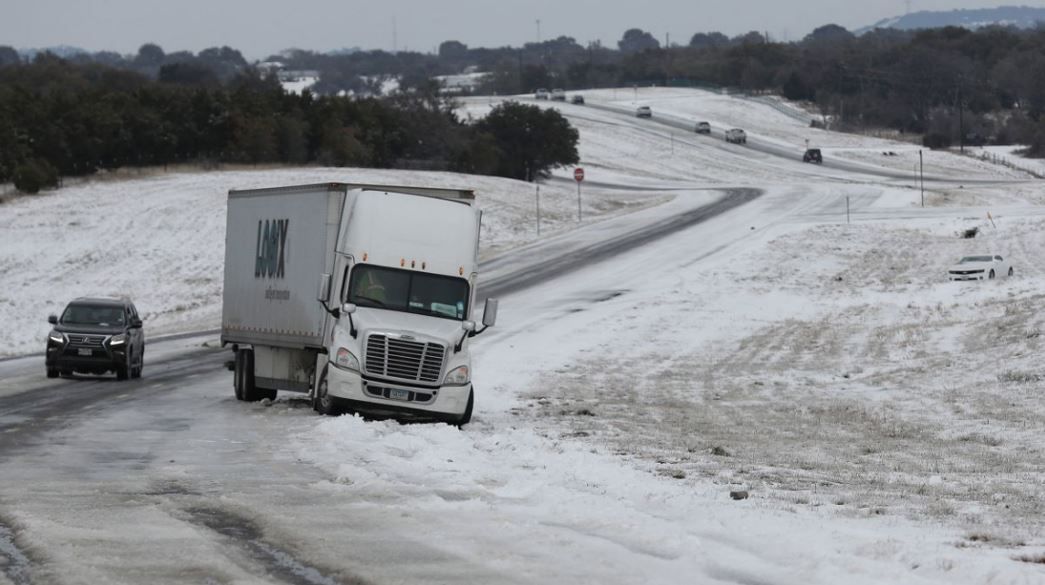
The climate in Texas ranges from sub-tropical to an arid dessert, thus spending tax dollars on snow clearing equipment and salt is not warranted. The TxDOT has only 30 snowplows to cover the vast service area, mainly concentred in Northern Texas where most of the annual snowfall is seen. This meant that main streets and highways were blanketed in 2 – 7" of snow on top of a thick layer of ice making driving dangerous for days. More than 300 automobile accidents were reported between February 10th and 11th alone.
Food, Water, and Power Shortages
The two storms between February 10th - 15th brought record low temperatures that stayed below freezing for 6 – 7 days across Texas. Most homes in the state are warmed with electric heaters which are inefficient, using up to three times more power than an air conditioner. So, when freezing temperatures and wind chills as cold as –23oF took over the state, residents ran to their thermostats to turn up the heat! As the heat went up – so did the need for electricity.
The Texas power grid called the Electric Reliability Council of Texas (ERCOT), could not keep up with the demand. In fact, the entire system was reportedly only minutes away from catastrophic failure which caused the need for partial grid shutdowns. Originally the ERCOT thought that frozen wind turbines and covered solar panels that provide about 10% of Texas’ power was to blame for the under supply of electricity; however, it was later determined that frozen gas lines and instruments were the real culprit.
Lucky citizens who live close to essential facilities like hospitals and 911 centers did not lose power at all. “Rolling Blackouts” should mean that while Grid A, for example, is without power for 45 – 60 minutes, Grid B would be powered up to allow those residents to generate some heat in their freezing homes, charge phones, etc. After 45-60 minutes, Grid B would be shut down and Grid A would be powered up. Repeat.
Unfortunately, many parts of Texas were not included in the rolling blackout system and remained without power for days. Those citizens had to close off parts of their homes and bundle up in Winter coats and blankets to keep warm. Some lucky families had wood burning fireplaces that allowed them to generate some heat. Other families desperately took to using generators and gas grills indoors to warm their homes. This dangerous practice led to over 450 cases of carbon monoxide poisoning. Some businesses that had power graciously opened their doors to residents as warming centers.
To compound an already challenging situation, freezing homes led to freezing pipes. This prompted a huge number of residents to start running faucets at a gentle drip, a practice that depressurized the system and lead to contamination of the water supply. Not only were Texans freezing in their homes, but they ended up under a “Boil Water” advisory - without power to boil the water!
As if Texas residents weren’t already struggling enough, the state was facing a food supply shortage too! Restaurants and grocery stores had to throw away perishable food items due to power outages. Some grocery stores had to close because they ran out of stock. Restaurants that still had food and electricity remained open; however, ended up quickly closing because they ran out of food. Residents were struggling to find even the most basic supplies, often stopping each other in grocery stores to hand out tips about where items like bread and milk could still be found. One Kroger store in Houston reported that patrons were lined up at 4am to shop and, despite having stocked their shelves prior to opening, were sold out of bread, milk, cheese, chicken and water by afternoon.
Most grocery stores operate on a Just-in-Time supply chain model which makes adapting to sudden spikes in demand challenging. Additionally, a red alert was issued about the availability of dairy products as many farmers were forced to dump milk due to power outages at their processing plants. A major chicken supplier in the state had to shut down operations due to power outages. Many grocery stores were also without electricity which made maintaining inventories of perishable items almost impossible. In some places, customers were seen shopping using cell phone flashlights at grocery stores that tried to remain open without power.
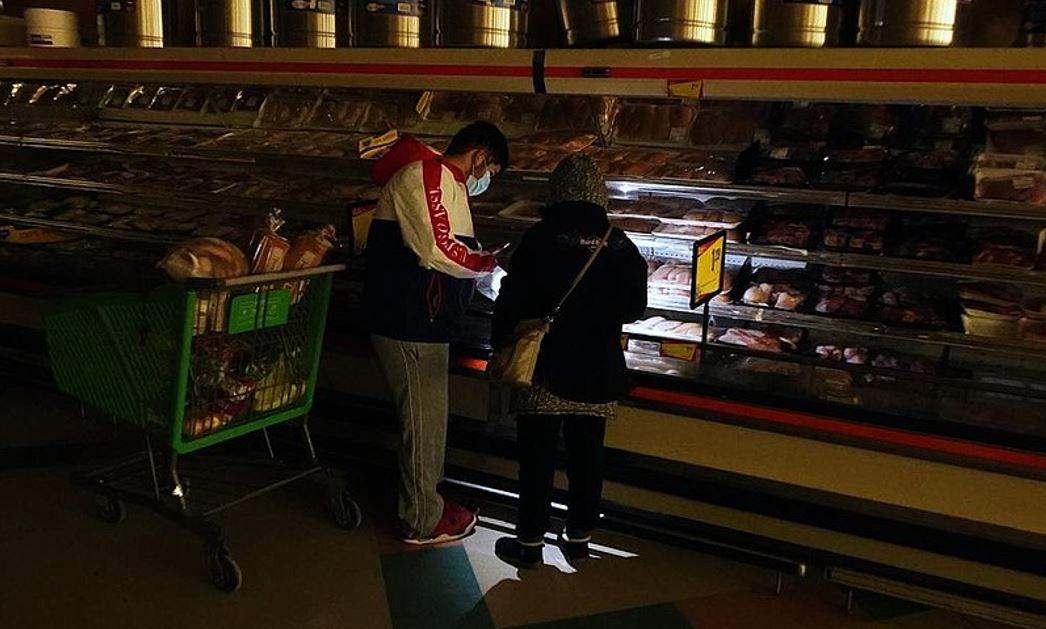
Photo Credit the Northwest Arkansas Democrat Gazette
Impact on Transportation
Winter Storm Uri stranded many en route transport trucks, delayed transit times, and shut down shippers and receivers. Sea ports became increasingly backlogged and many rail roads, including Union Pacific, shut down for periods of time. As a result, truck capacity plummeted which resulted in steep spikes for demand in the spot market and has put pressure on contracted pricing.
Disrupted power supplies in Northern Mexico caused freight that normally takes one day to cross into Laredo to take 2 – 3 days. The longer the border crossing was shut down, the more freight piled up adding to the bottleneck.
Treacherous road conditions kept many drivers out of Texas, and those drivers still in the state stayed parked. Carriers who remained on the road had to be especially careful when planning their routes as fuel stations across the state were closed due to frozen lines. To aid with fuel supply, the Texas Comptroller’s Office lifted the restrictions on selling off-road diesel from February 12th – 26th to ensure emergency response vehicles, power company service trucks and transport trucks carrying supplies for disaster relief could stay on the road.
Ongoing issues with driver shortage and the ongoing rise in the demand for e-commerce freight through the COVID-19 pandemic has limited truck capacity in the market. When Texas roads began to close due to unsafe conditions, trucks shut down within the state and others never ventured in. Adding insult to injury, this happened around the President’s Day weekend which typically sees a drop off in truck capacity. According to DAT, load-to-truck ratios were up 29% on dry vans and 28% on reefers. The tight capacity and almost desperate demand to move freight continued to push rates higher.
Truckload capacity is not the only mode of transportation that has been impacted. LTL, small parcel and final mile shippers are backlogged as several carriers had shut down offices in affected states. Other carriers who operate outside of affected areas were not allowing their trucks to do pickups until conditions improve.
Even as the Texas climate returns to normal, freight demand is not predicted to get a break. Customers who were unable to procure essential items during the blackouts are expected to deplete store inventories as they restock their homes creating another spike in truck demand. The heavy backlog of freight would have been easier to recover from if the affects of Winter Storm Uri were confined to a single state; instead, the weather system caused disruptions in several markets making reconnecting supply chains more difficult.
As shippers play catch up with the backlog of pending freight and new orders, the increased demand on already strained capacity is likely going to push spot rates higher and put extra pressure on transportation customers to renegotiate contracted rates.
